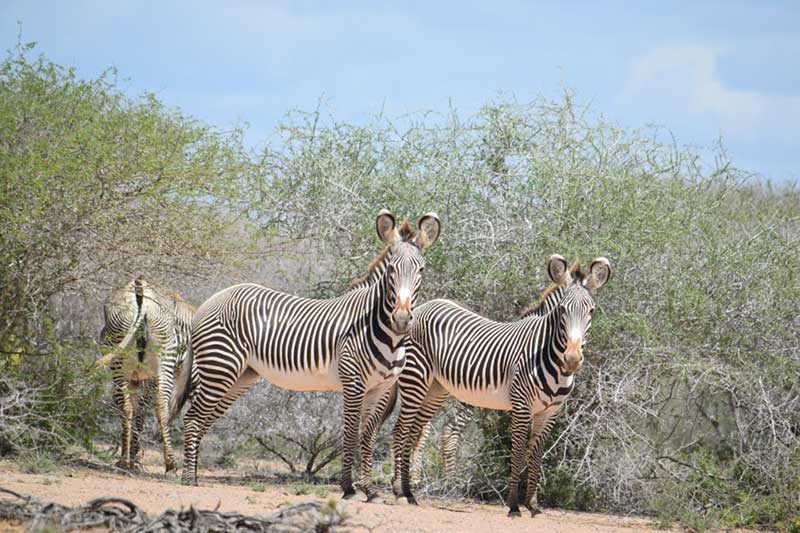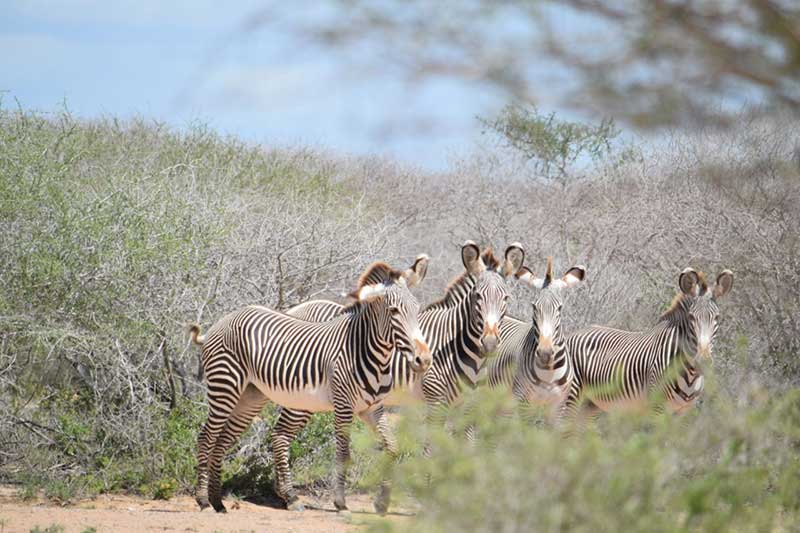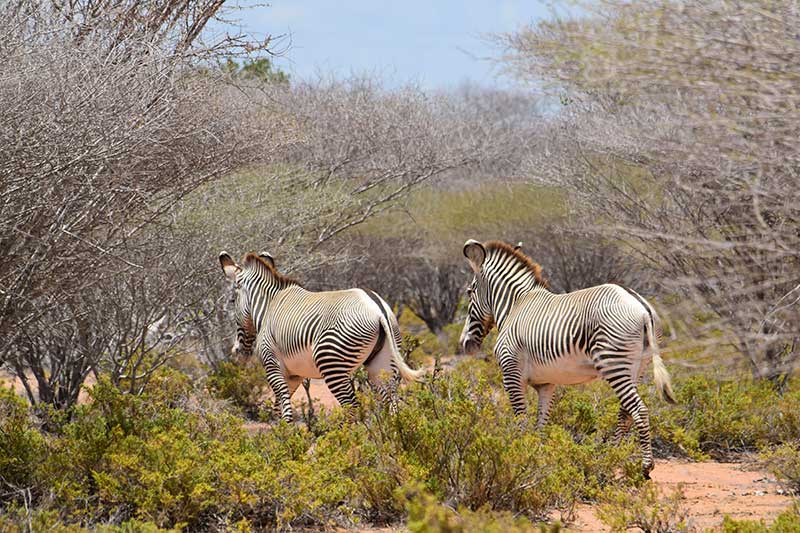Mapping the forgotten Grevy’s zebra in eastern Kenya

Sadly the Grevy's zebra population has suffered a sharp decline of almost 85% since the late 1970s. Just 2,500 adults remain in the wild.
Funding for this project has now finished
Introducing a familiar stranger
Zebras are one of the most distinctive species in the animal kingdom. Their black and white stripes have likely evolved as a means for zebra to confuse predators on the plains of Africa. But despite this familiarity, most of us know very little about our horses’ wild cousins. Three species of zebra exist today, and PTES is providing support for our colleague Ali Hussein – who we already fund to work on hirola antelope and giraffes – to protect the most threatened species: Grevy’s zebra. Endemic to the Horn of Africa, Grevy’s are the largest of the zebra species. Their stripes are thinner than those of plains or mountain zebra and finish at their bellies, which are usually white. Grevy’s look most horse-like and have larger, rounded ears compared with the other species.
Over-grazed grassland threaten their survival
Sadly their population has suffered a sharp decline of almost 85% since the late 1970s. Just 2,500 adults remain in the wild. During the same time their range has decreased and their population has fragmented. All Grevy’s zebras are now found in Ethiopia and Kenya, with a good number occurring in Kenya. Despite the species being protected in both countries, efforts to look after them are made harder because less than 1% of their range overlaps with protected areas. Their land has been badly damaged through overgrazing by livestock.
Although Grevy’s zebras are adapted to dry, semi-arid grassland and scrub areas, the degredation of their habitat means that they now have to roam over increasingly larger areas to find enough food. Unlike plains zebras they don’t need to drink water every day – they’ve been recorded going five days without taking a sip! But damaged grasslands are now just too dry for these animals to survive and, during times of extreme drought, supplementary water has had to be provided.


Putting the species back on the map
Although one isolated remnant population is still found in Garissa and Wajir, all conservation efforts in Kenya are focused on the populations further south in Laikipia, Samburu, Isiolo Counties. This is even reflected in the current IUCN range of Grevy’s Zebra which does not include the populations in Garissa and Wajir counties. The omission of these groups puts them at risk of being wiped out due to habitat fragmentation and inadequate protection.
As a result, Ali and his team will carry out a complete Grevy’s zebra survey to map these fragmented populations in eastern Kenya. The data from this study will be used to correctly update Grevy’s zebra database and return their remnant populations on the Grevy’s world distribution map. Ali also plans to document all the threats facing these populations. This information will be used to design a strategic plan to enhance their recovery. Crucially, it will include the establishment of new protected areas. We hope these first steps will begin to change the future prospects for this little-known species.
Thank you to all our donors who helped us fund this work. You can help us support more projects like this with a donation today:
